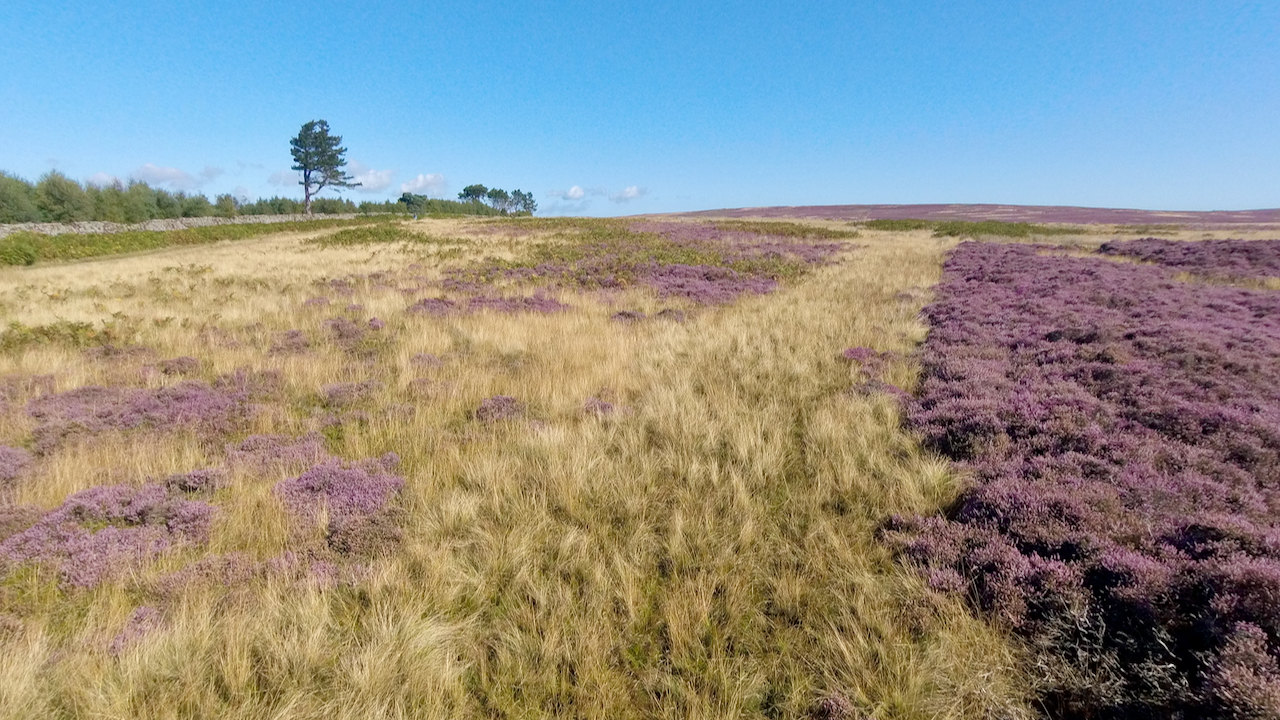Great Ayton Moor is well known for its wealth of prehistoric monuments, including a chambered cairn, a large cairnfield and an Iron Age enclosure1NYMNPA HER Nos: 18/2118/2124/2129.
The most photogenic feature must be the chambered cairn which I’ve posted about before here, but today was submerged by bracken.
In the photo this bracken covered chambered cairn is top right in the distance, leading from it, however, is another distinct feature, a bank or ‘tail’, 610-660 mm. high, extending south-westwards for about 91 metres.
In the 1960s, excavations across the bank revealed a kerb of large boulders. The bank itself is heather-covered but an old grassy trackway running parallel to it clearly defines the bank’s north-western edge2Hayes, R. H. ‘The Chambered Cairn and Adjacent Monuments on Great Ayton Moor North-East Yorkshire’. Scarborough and District Atchaeological Society Research Report No. 7. 1967..
Pollen analysis during these excavations shows the area during the construction of the chambered caire was a mixed oak woodland. The soil under the bank or tail was slightly different with more hazel and birch present suggesting it was constructed during a later period3Ibid. Page 42..
- 1NYMNPA HER Nos: 18/2118/2124/2129
- 2Hayes, R. H. ‘The Chambered Cairn and Adjacent Monuments on Great Ayton Moor North-East Yorkshire’. Scarborough and District Atchaeological Society Research Report No. 7. 1967.
- 3Ibid. Page 42.

Leave a Reply